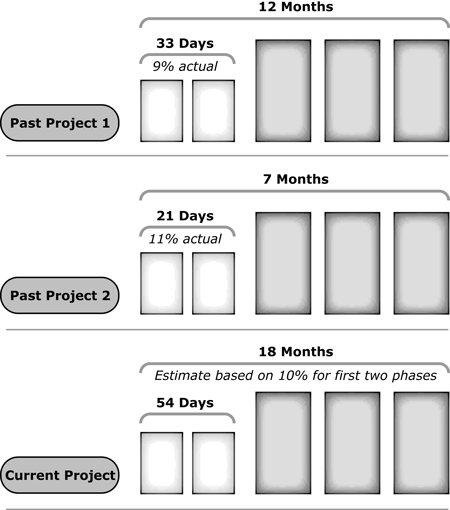Cutting Project Costs with a Scalpel, Not a Chainsaw
From 1945 to 1965, the financial market in the U.S. moved upward. It then moved sideways until 1982, and up again until 2000. Right now, we are engaged in another great sideways movement. It could continue for another decade or so, and as businesses fail and members of congress pound their fists, it is natural to fear for the future.
These types of fears can be especially dangerous for businesses, as management often makes unwise decisions out of panic. For example, they might cut employees or reduce spending on many projects and programs that are good for the company. Consequently, many companies that slash costs in response to an economic recession find themselves unable to achieve top-line growth when the recession ends.
Extreme cutting of people and projects can be avoided, or at the very least, they can be performed with more intelligent precision. All that are required to handle such problems the right way are per-customer per-project profitability metrics.
Understanding costs is the first step towards understanding profitability. Most managers know how profitable the company is in general, but few of them know how profitable it is on a per-product or per-customer basis. Yet this level of understanding is necessary in order to develop and implement the right growth strategy. Think of it as the difference between performing surgery with a scalpel and performing it with a chainsaw.
How to Cut Costs with Precision
So how can you possibly know where you should cut and where you should not? It is actually rather simple once you have the right data. As it stands today, do all of the executives in your company know which of your past projects were successful? How many employees worked on them? How much time and resources were spent on them? Do you know which of your clients are profitable and which ones you lose money on?
Having this kind of information available is crucial while planning future projects and budgets. It enables you to make much more informed, financially sound decisions.
If you don’t know your costs on a per-project basis, then you have no way to validate
future project estimates. Was your previous project estimate accurate, both in scope for time and budget, or was it completely unrealistic? Which processes are working for you and which need to be improved? There is no way to answer these questions unless you are tracking time on projects, and not knowing these answers is especially dangerous during a recession.
Where to Begin
Get your employees to track their time on a per-project basis. Yes, everyone hates timesheets, but they can make an enormous difference to the success of your business, especially when the economy is down. The time data you collect will alert you to when projects are in trouble much earlier, giving you the opportunity to do something about it before it is too late. You will also learn which projects are consuming too much time and which clients are cheapest to service. During an economic recession, you will be able to “fire” your unprofitable customers and work hard to keep the profitable ones happy.
Next Steps
Once your company is tracking time, you will need to add labor rates to the data. The time of one employee can cost the company more than the time of another, and those costs add up on major projects. It is also important to track all expenses. For instance, some projects and customers use up more travel expenses than others. Collecting all this data on a per-project basis can help you understand true direct per-project cost, giving management better insight into how to cut costs with precision.
It is also necessary to allocate indirect costs in order to paint the full picture of where your company spends money. There are two types of indirect costs: general indirect costs, such as rent, that need to be allocated across every project in the company, and semi-indirect costs, such as customer relationship management, which should be applied to all projects for the customer in question. For general indirect costs, you will need to create an allocation formula for each type: marketing, legal fees, office rent and electricity, etc. For semi-indirect costs, there is a different process. If you have a large customer you do multiple projects for, there are usually some costs that apply to those projects as a group, but not against any particular one of them. In this case, you might allocate these semi-indirect costs by revenue or direct cost over those projects.
Per- Project Profitability
Once you understand per-customer per-project profitability, you will have a significant advantage over your competitors, not only during a recession but during good times as well. They don’t know where their profits come from but you do, so when you have to make cuts, you can easily calculate ROI on various projects and isolate the unprofitable work. Regardless of the economic climate, knowing where you are profitable and where you are not is the only way to thrive in a competitive business environment.
Don’t forget to leave your comments below
Curt Finch is the CEO of Journyx. Journyx offers customers two solutions to reach the highest levels of profitability: Journyx Timesheet – a timesheet and expense management solution for the entire enterprise – and Journyx ProjectXecute – a solution that unites project and process planning with resource management. Journyx has thousands of customers worldwide and is the first and only company to establish Per Person/Per Project Profitability (P5), a proprietary process that enables customers to gather and analyze information to discover profit opportunities. Curt is an avid speaker and author, and recently published “All Your Money Won’t Another Minute Buy: Valuing Time as a Business Resource.” Curt authors a project management blog and you can follow him on Twitter.
